Abstract
The biochemistry laboratory records of a 400-bed general hospital serving a population of about 120,000 showed that during the three-year period 1966-8 inclusive 487 patients had at some stage during their admission a blood urea of 100 mg/100 ml or more. Ninety per cent. were aged 50 or over, 79% were 60 or over, and 52% were 70 or over.
The case notes of all patients with renal failure admitted during 1966 and 1967 were examined together with those of patients under 60 admitted during 1968. Three observers agreed about the most likely cause of the renal failure in 90% of patients whose case notes were available, or 74% of the total. The raised blood urea was thought to be due to “prerenal” factors in 60% of the patients, to acute tubular necrosis in 80%, to obstructive uropathy in 12%, and to “intrinsic” renal disease in 20%. Renal failure precipitated by such factors as cardiac failure, chest infections, cerebrovascular accidents, and shock was particularly common in old people.
The hospital survey and replies to a questionnaire sent to all general practitioners in the area suggest that in the three-year period 14 patients may have been suitable for treatment by maintenance haemodialysis or renal transplantation. This represents a rate of about 39 per million per year under the age of 60 and 28 per million per year under 50.
Full text
PDF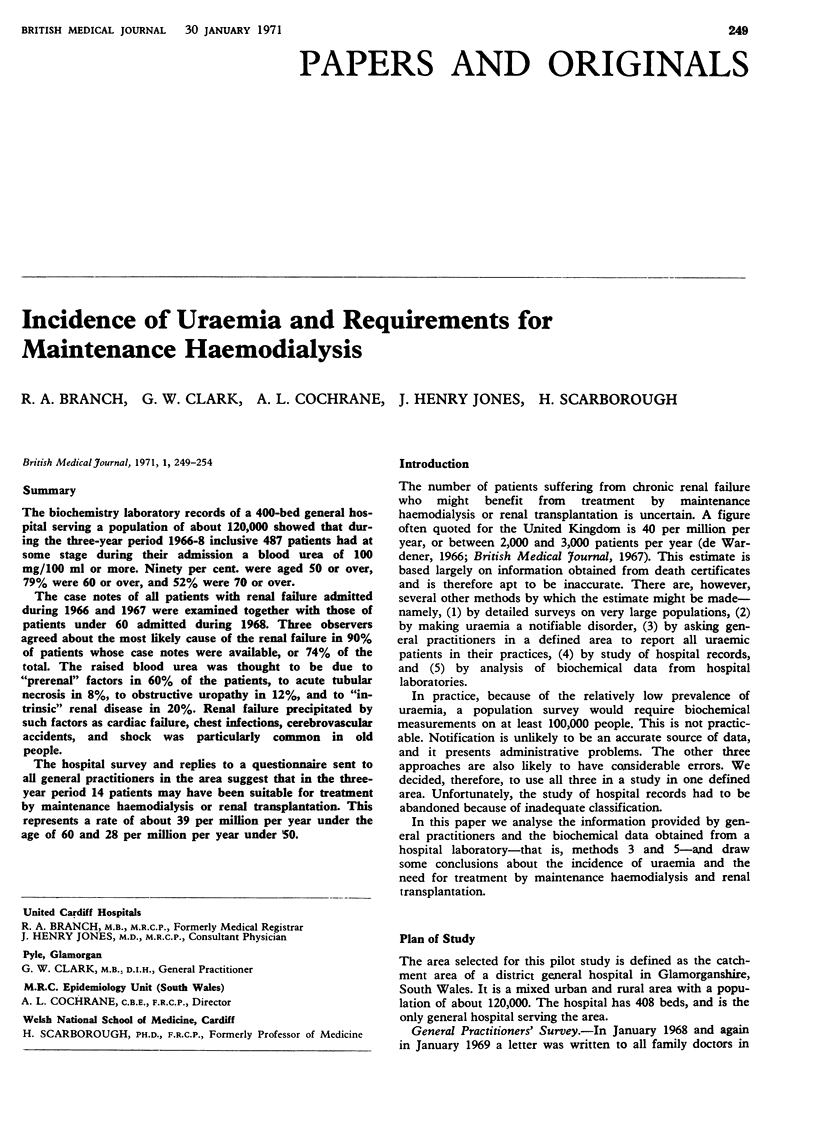
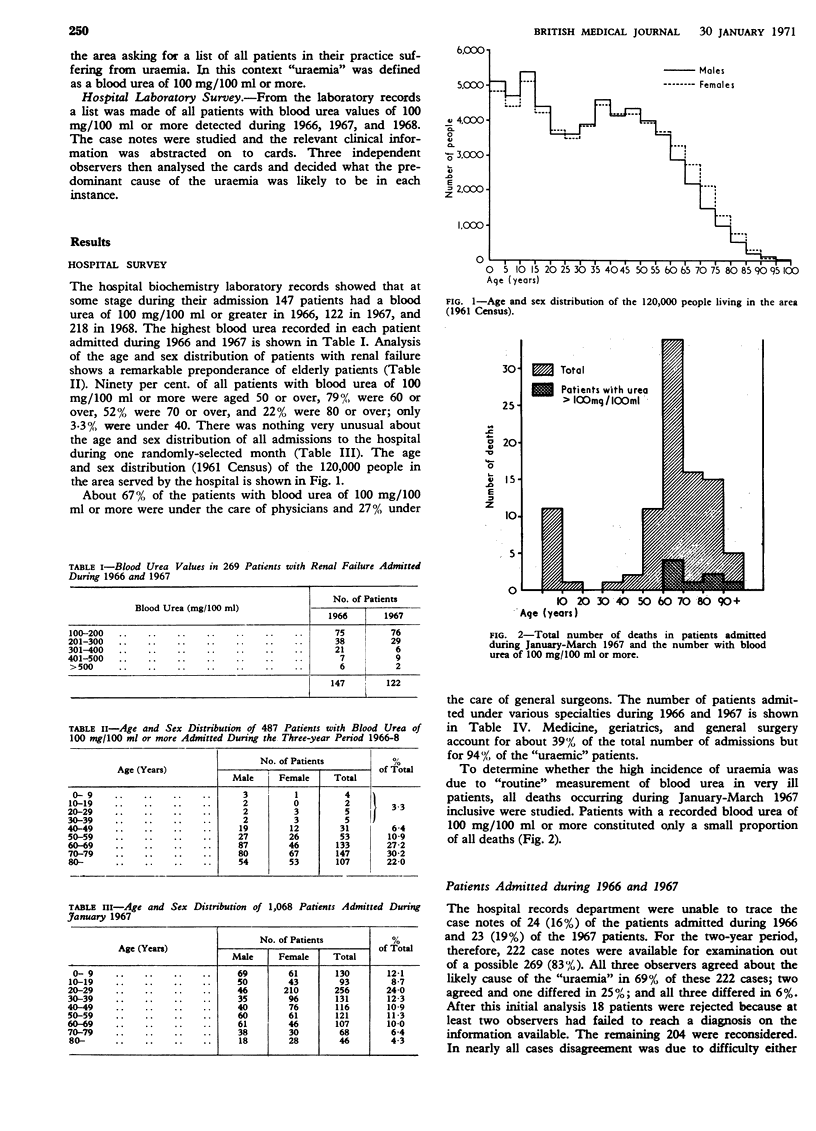
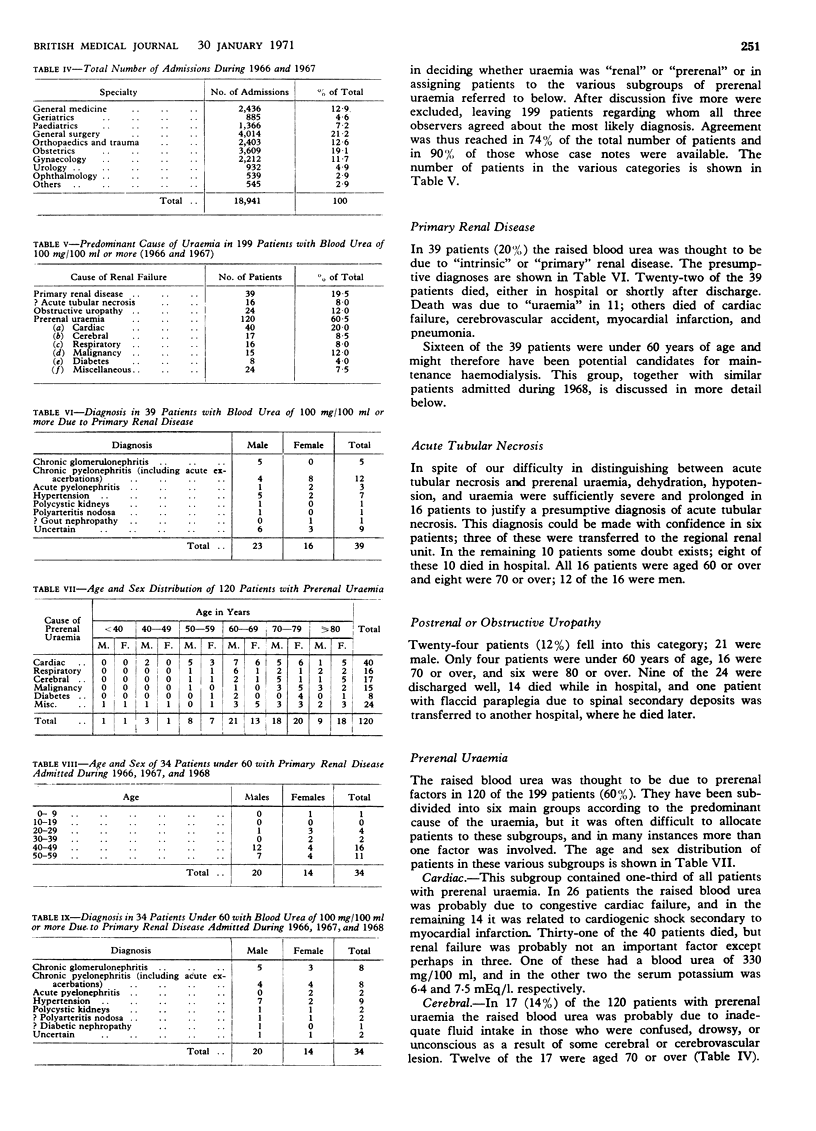
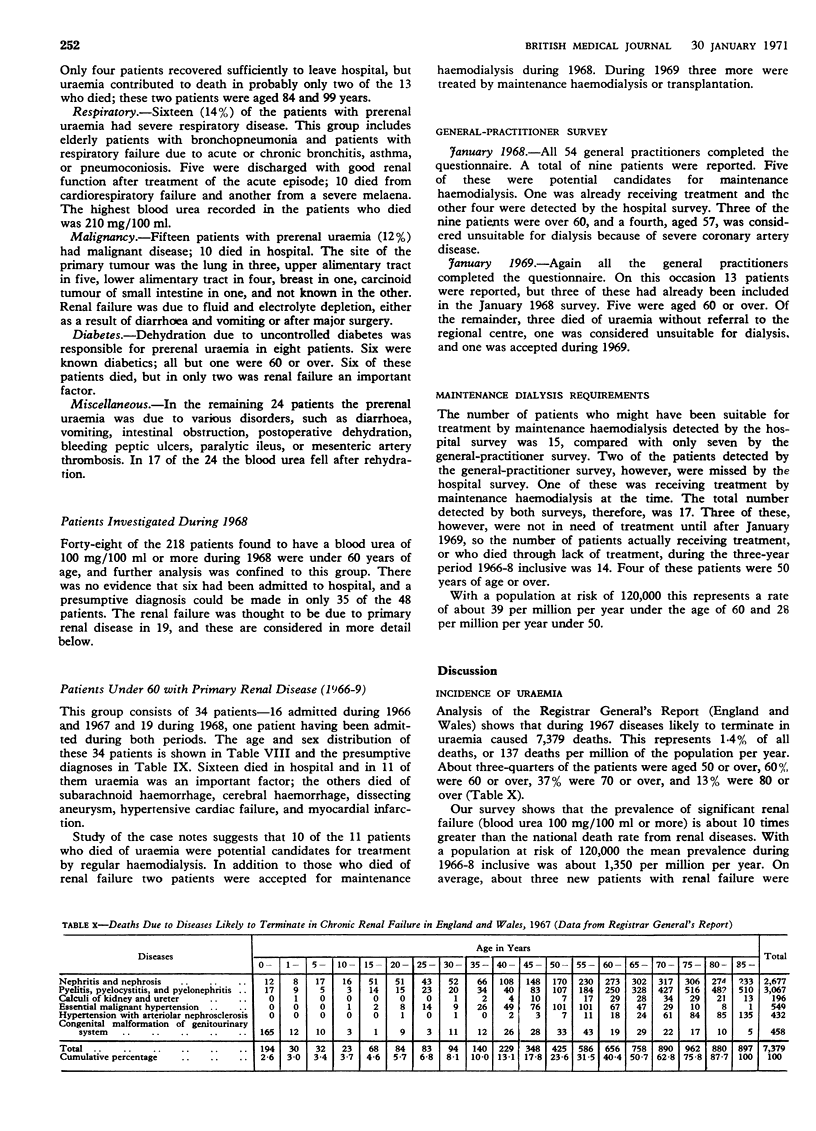
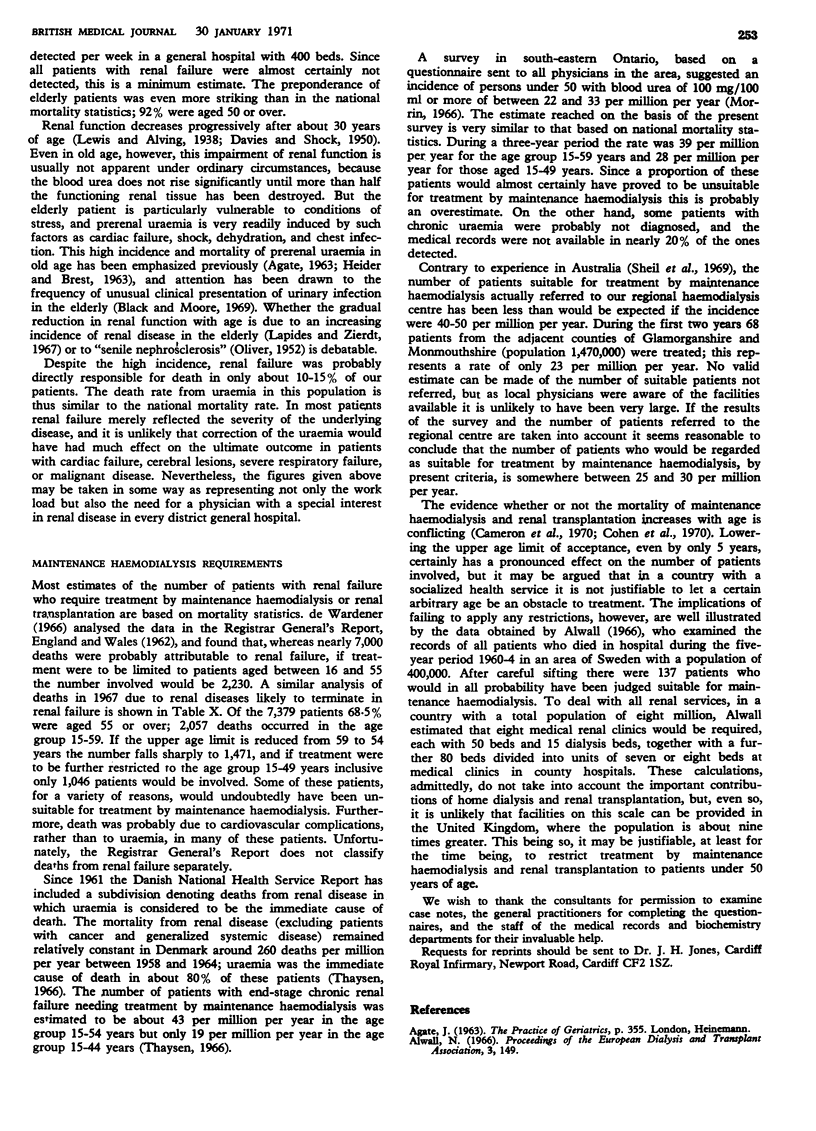

Selected References
These references are in PubMed. This may not be the complete list of references from this article.
- Black D. A., Moore T. Urinary infection in the elderly. Geriatrics. 1969 Feb;24(2):126–136. [PubMed] [Google Scholar]
- DAVIES D. F., SHOCK N. W. Age changes in glomerular filtration rate, effective renal plasma flow, and tubular excretory capacity in adult males. J Clin Invest. 1950 May;29(5):496–507. doi: 10.1172/JCI102286. [DOI] [PMC free article] [PubMed] [Google Scholar]
- HEIDER C. H., BREST A. N. Renal insufficiency in the aged. Geriatrics. 1963 Jun;18:489–493. [PubMed] [Google Scholar]
- Lapides J., Zierdt D. Compatibility of normal renal function with aging. JAMA. 1967 Sep 4;201(10):778–779. [PubMed] [Google Scholar]
- Morrin P. A. A survey of chronic renal failure in southeastern Ontario. Can Med Assoc J. 1966 Jun 25;94(26):1353–1356. [PMC free article] [PubMed] [Google Scholar]
- Sheil A. G., Stewart J. H., Johnson J. R., May J., Storey B. G., Rogers J. H., Charlesworth J. A., Wright R., Sharp A., Johnston J. M. Community treatment of end-stage renal failure by dialysis and renal transplantation from cadaver donors. Lancet. 1969 Nov 1;2(7627):917–920. doi: 10.1016/s0140-6736(69)90586-8. [DOI] [PubMed] [Google Scholar]


